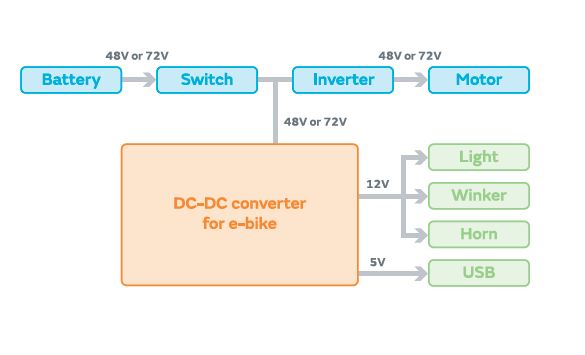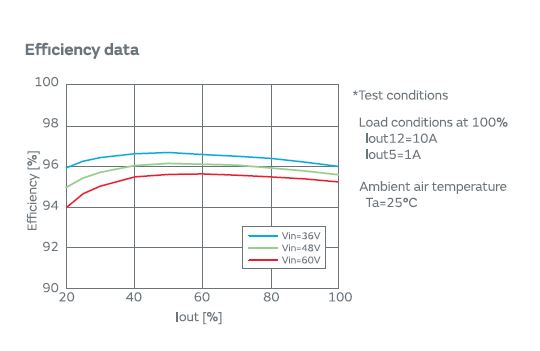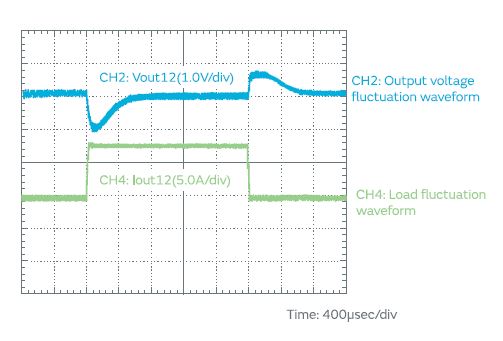What’s the key selection criteria for powering electric motorcycles?
Takayuki Tange, Product Design Engineer, Komatsu Murata Manufacturing, explores how DC/DC converters are used to power the host of auxiliary devices that contribute to the make-up of today’s electric bikes.
Fuel costs that are continuously on the rise combined with environmental concerns, are driving many of us to question are own carbon footprint and move towards more sustainable forms of transport. Electric bikes are becoming increasingly popular, especially in emerging countries. They typically use 48 or 72V DC to provide power to an electric motor. While the use of this high voltage is to ensure the drive motor provides enough torque, it still leaves a decision on how to power the host of auxiliary devices such as headlamps, indicators and horn which are normally powered from a 12V DC battery. In order to provide this supply a DC/DC converter is used.
Figure 1: Power supply for an electric motorcycle
Clearly the operating environment of an electric bike can be very demanding. There are many mechanical challenges such as dust, vibration and shock that require any part used to be highly resistant to these conditions. Many emerging countries have rough road surfaces with lots of pot-holes that make travel hazardous and progress slow. Also, exposed to the weather elements such as water there is a need for any component used to be highly reliable. As always, space is at a premium so the placing of the DC/DC converter on the electric bike will always be a compromise between available space and the proximity to mechanical vibration. The lack of available space also stipulates the reduction of the space envelope of the converter’s footprint. This drives the need for surface mount components to be used in the design wherever possible. The electrical parameters of a desired DC/DC converter also need to be considered and the specification of responsiveness to load fluctuation, for example, will be one of many criteria that a designer needs to take into account.
Figure 1
An example of such a DC/DC converter aimed at electric bike applications is Murata’s MPD7K046S. Surface mounted components account for approximately 90% of the converter’s components, and some tall components, such as coils and capacitors, are fixed with resin to improve vibration resistance. Its exterior is a case made of glass fibre reinforced polybutylene terephthalate (PBT) plastic, which was chosen to reduce costs. Through a simulation carried out using software simulation tools, it has been verified that the converter has sufficient strength. The method of providing water and dust resistance is shown in Figure 2. The product complies with IP56 thanks to the sealing material which, in the mass production process, is automatically applied, with the quantity applied controlled to maintain a stable mass.
Also, in order to make the converter as small as possible, a non-isolated step-down switcher is employed to simplify the circuit structure.
Figure 2
Figure 2: Water and dust-proof structure
This performs a synchronous rectification process that helps to increase the device’s efficiency to approximately 95% - as shown in Figure 3. The increased efficiency ensures that overall the converter produces less heat that needs to be dissipated. The DC/DC converter itself has a complete thermal design, and the need to transfer and dissipate heat via other means, for example, using a baseplate cooling technique, is not required. This further contributed to maintaining a small form factor allowing the converter to be placed in virtually any location.
Figure 3
Figure 3: Power conversion efficiency curve
One of the key design characteristics for electric motorcycles is load responsiveness. Although the total electrical power of always-on auxiliary devices, such as headlamps and backlighting, is approximately 120W, an electrical power of approximately 200W is required at any given moment. This is because not all electrical devices are always-on, such as brake lamps, turn indicators and horn, since they are used as required. The need to respond to changing and sudden load fluctuations can put a lot of stress on a DC/DC converter and might in some cases cause the converters’ protection circuitry to malfunction and terminate the output voltage. In extreme cases such a malfunction might cause an abnormal oscillation leading to a breakdown of the DC/DC converter and potentially damaging some or all of the auxiliary devices. In order to provide a more load responsible characteristic, Murata’s DC/DC converter is designed with a current mode control. Using this approach and assuming all possible operating temperatures, this technique is designed to ensure stable operation at low and high temperatures and to be controlled to respond to large fluctuations in the input battery voltage, while offering excellent load responsiveness, as shown in Figure 4.
Figure 4
Figure 4: Characteristic waveforms for load responsiveness
When selecting a suitable DC/DC for such applications the designer needs to take account of the number of different operating voltage outputs required. For example, a 12V DC output would typically be required for powering auxiliary devices such as lights, horn and tail lamps. Increasingly becoming popular is the provision of a USB supply for charging mobile phones etc. If that is required then a 5V DC supply will be required. Provision of safety and protection features such as output short circuit, output overcurrent and low input voltage should all be available. Also, protection against over temperature should be included.
Electric motorcycles, bikes and three/four wheeled electric taxis are forecast to grow significantly in the future. As the electrical circuits of these vehicles grow, so will the need for reliable and compact DC/DC converters.







